
Modal Subversions [2] “Pawky” – Dorothy Ashby
Dorothy Ashby! knowing her name and sounds will make you happier.
Her composition “Pawky” is a hip take on a minor blues form in D, starting with a ‘Dorian’ minor sound [ w / natural 6 = B ] which is borrowed from the key of C major. This is a common sound choice or substitute for a minor tonic chord.
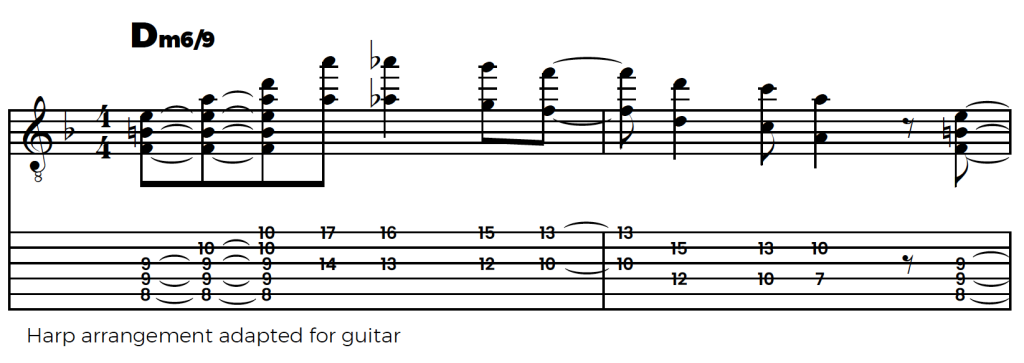
Intervallic structures within chord functions don’t affect the perception of a given harmonic function regarding its role – especially as compared to large scale intervallic relationships and the overall tonal context. This is one of the reasons and ways how modal interchange and specific substitutes work:
E.g. the more ‘in-key’ sound in F major / D minor is ‘Aeolian’ [ w / b6 = Bb ] – which one would expect, looking at the standard notation accidentals. Though this mainly reflects technical notation conventions, simply to avoid too much visual clutter.
D melodic minor is another common sound choice for a minor tonic chord. Here, the melody features a b7 instead,so ‘Dorian’ is still a better fit to harmonize the melody. Melodic minor still works amazingly well, e.g. during solos – or, to reflect the composition’s character some more: alternate between ‘Dorian’ and ‘melodic minor’ ideas for the I and IV harmonies:

A [ biii ] chord [ Fm∆9/Ab ] subs for the IV chord function in bars 5 & 6 – again that major-minor mixology that which colors the blues. It’s basically a subdominant susb9 sound derived from F melodic minor [ ‘MM2’ = ‘Dorian b9’ = G7susb9/Ab ].
To be able to switch more easily though, as compared to compute the proper melodic minor mode / scale, it’s easier to think D minor (blues scale / Dorian / melodic minor) to F melodic minor.
Alternatively, the standard IV harmony [ Gm ] is hip too, as can be heard in the solos of the original recording.
Technical aspects
Being adapted for guitar, this head arrangement is also your next best excuse to work a bit on octaves and not being stuck in one position only.
The most challenging part is to switch between the voicings and the high octaves of the melody. Intervallic jumps that are larger than one or two octaves are easier to play on harp – on the plus side, you don’t have to deal with levers to sharpen and lower pitches or to change the key. You can also play single-notes alternatively, still sounds great, especially if your favorite bass player and drummer happen to join in.
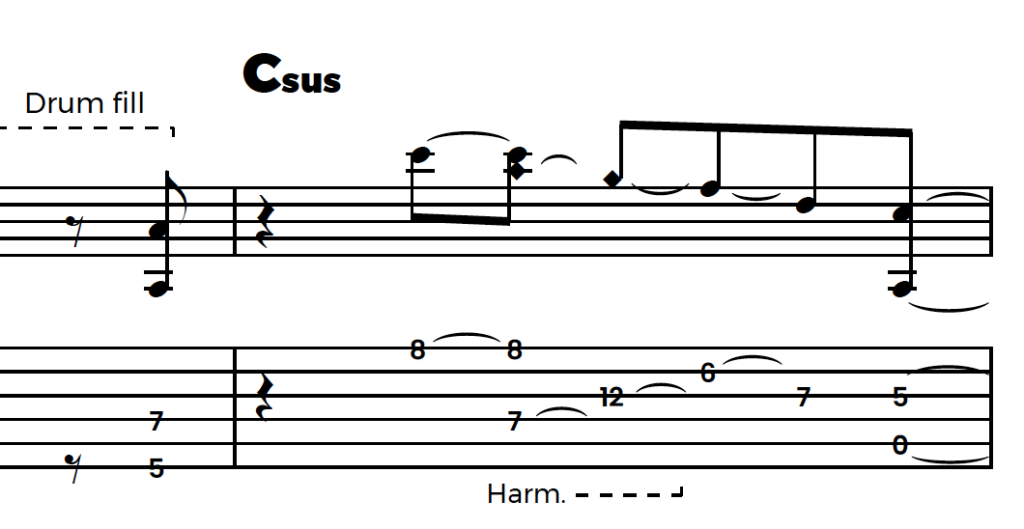
Another typical harp sound that works well on guitar is to keep notes ringing, comparable to the ‘sustain-pedal’ sound of a piano. The pace of the tune is fairly quick, with a focus on rhythm so this mainly occurs in the above bar. Make it your own for the improvisation.
Find more detailed explanations and lessons about this in Concepts for Solo Guitar (p. 58).
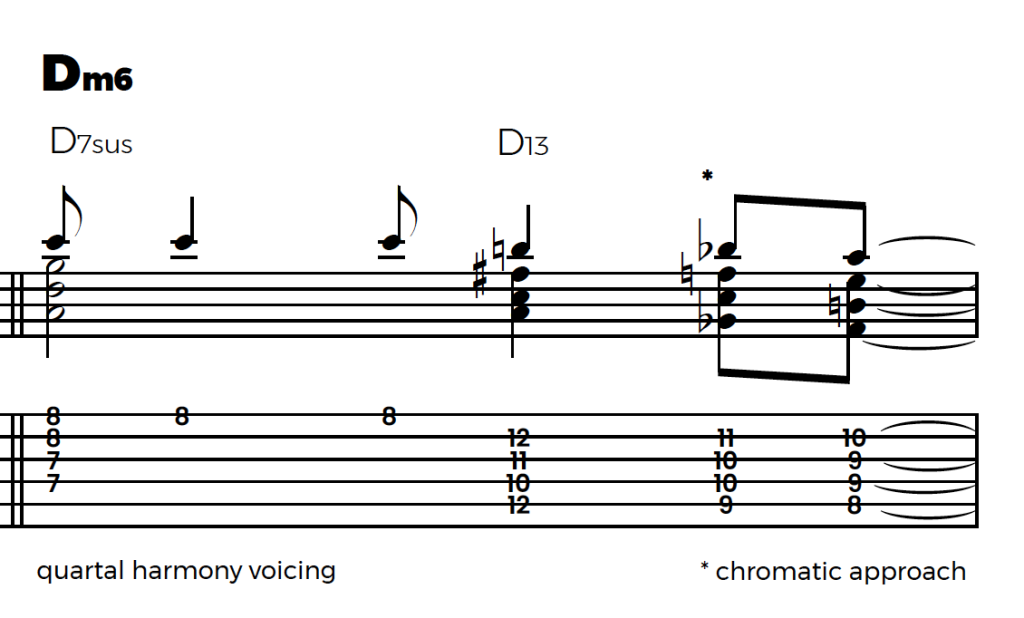
Finally, here’s a brief quote from Ashby’s solo – which itself is a quote of a well-known melody. The first part comes with a harmonization idea for guitar, the second shows her melodic single-note line approach.
Listen to her original recording(s)! So many ideas, so much swing.
Another melodic idea (in E minor) – this time around it’s more about the motif itself than approximating the sound of a harp technique. It’s always insightful to listen for what all those other instruments have to say.
The adapted motif is a blues-y lick that fits both physically – on the fretboard – and sonically well with a minor 6 voicing, consisting of stacked fourths. You definitely played that one before, e.g. as upper part of a 7/13 chord [ A13, starting from the b7 ] or simply as a ‘lydian’ voicing [ G∆#11 ].
The line ends on the 6th of the chord, to emphasize the specific sound quality.
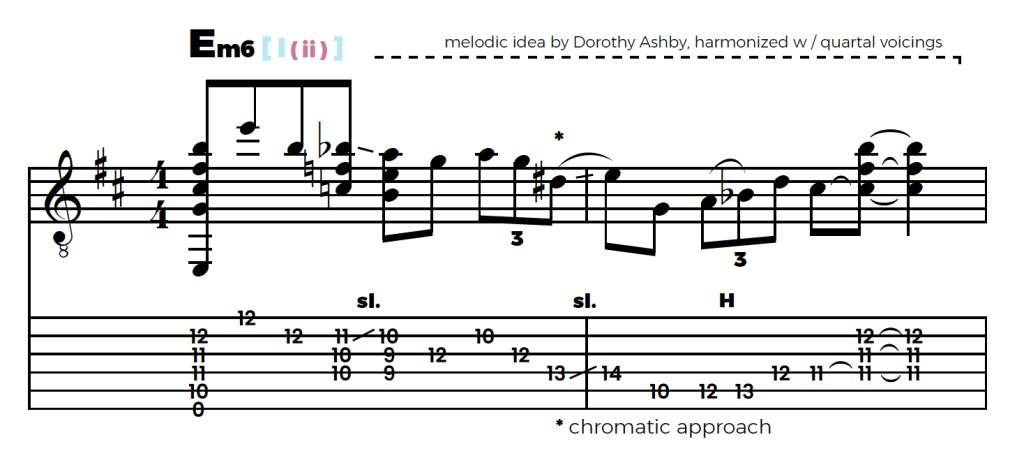
Though the actual key center is a form of E minor, the 6th [C#] found in E melodic minor can also suggest the key of D Major. In that case the tonal center, the minor I chord, is a lydian sound, rather than a melodic minor one. This one usually leads smoothly to the chord function a half step below, here it’s F#7alt. :
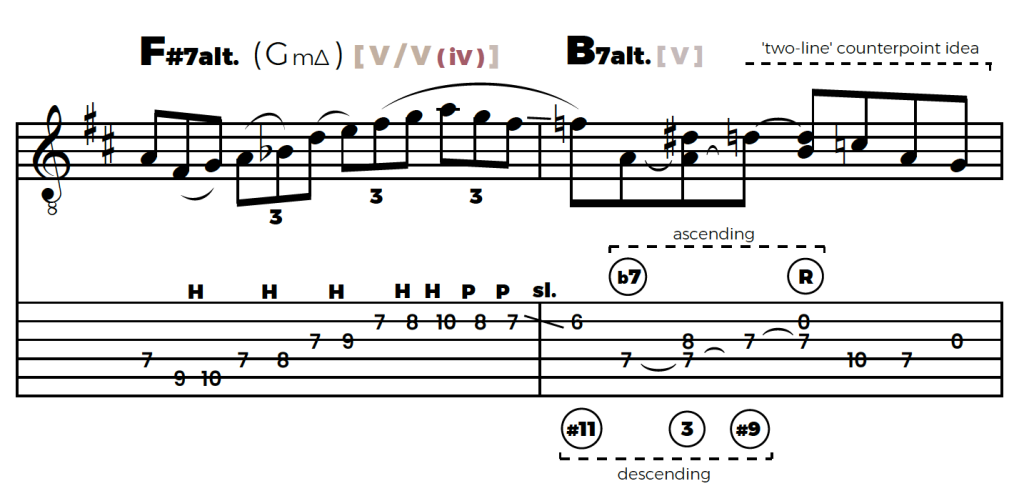
An alternative way to access the altered scale, other than having the fitting F# altered scale position available, is to think to move from G lydian to G melodic minor [ IV – iV ] – a very common move. A good example why it makes sense to think in key and numbers to notice and take advantage of harmonic relationships. There’s also a lot of legato going on in this one which is a nice way to work on some fretting hand technique while exploring the scale sound.
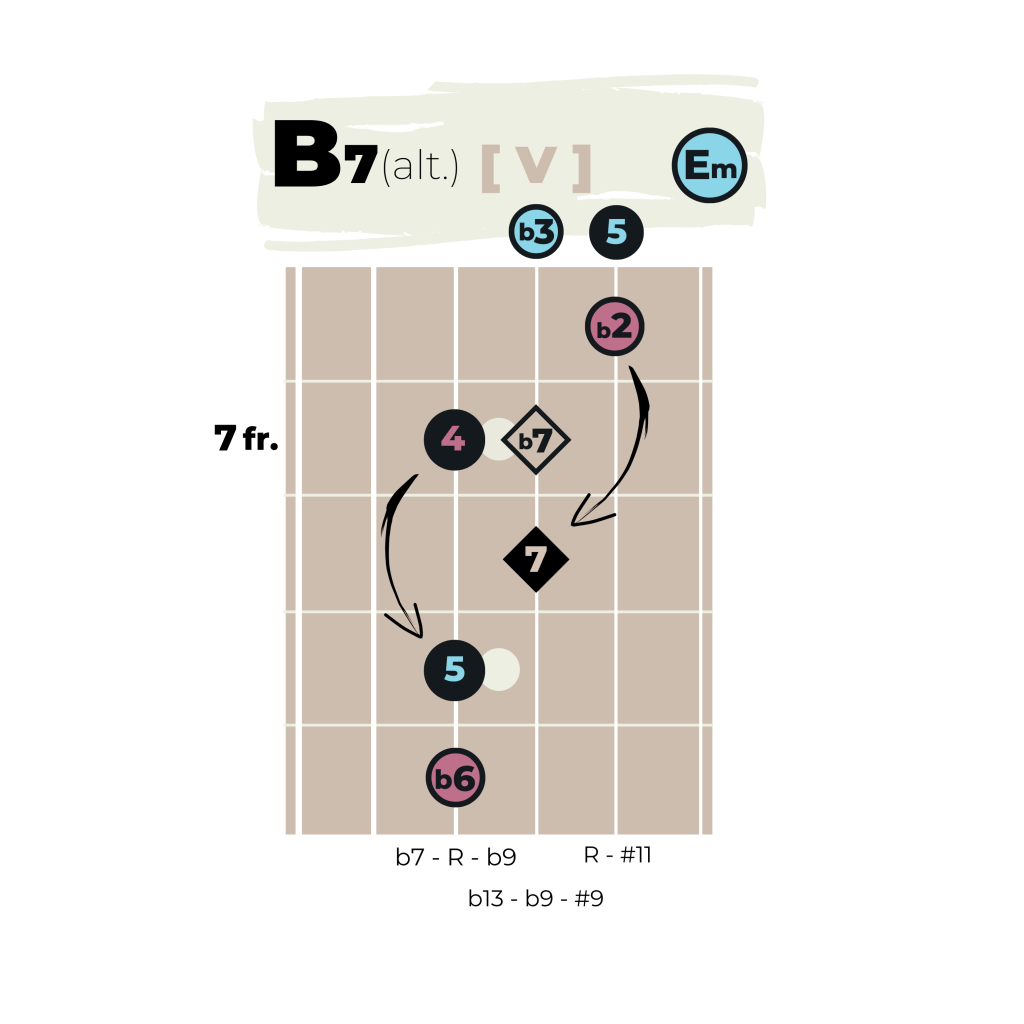
Finally, there’s the descending altered scale run of the B7alt. chord which leads back to the I chord, this time around ‘in between major and minor’ [ 7#9 ]. The scale run is inspired by Jimmy Wyble’s two-line concept, a short and simple application of contrary motion with a couple of ascending notes to contrast the overall descending line. The use of open strings adds a nice texture to the single-note line.
Give it a try and see if you can apply some of the ideas to your own 🙂

